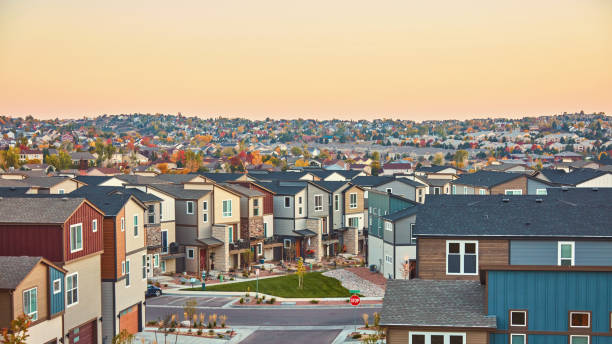The housing shortage is probably not news to anyone who’s looked to buy a home recently. According to the National Association of Realtors (NAR), the supply of homes for sale in the U.S., typically measured in months of housing supply, reached a record low of just 1.6 months in January 2022. While inventory has increased considerably since then, reaching 4.2 months in August 2024, it is still not enough to meet the growing demand.
Insufficient inventory may be obvious to house-hunters, but it’s a complex problem with no obvious solution. This article delves into the factors contributing to the U.S. housing shortage, its effects on the real estate market, and potential avenues for addressing it.
Table of Contents
- Overview of the U.S. Housing Shortage
- Why is There a Housing Shortage?
- How the Housing Shortage Impacts the Real Estate Market
- Exploring Possible Solutions to the Housing Shortage
- Conclusion
1. Overview of the U.S. Housing Shortage
The U.S. housing shortage has become an increasingly pressing issue, especially over the past decade. For buyers, fewer available homes mean rising prices and fierce competition. The National Association of Realtors (NAR) typically measures housing supply in “months of supply,” which estimates how long current inventory would last if no new homes were added. In January 2022, the U.S. reached a record low of 1.6 months of housing supply, which climbed to 4.2 months by August 2024. However, the U.S. housing market still lacks the stability to satisfy long-term demand.
2. Why is There a Housing Shortage?
Multiple factors contribute to the ongoing housing shortage. While the COVID-19 pandemic heightened the problem, many root causes predate 2020, reflecting years of underbuilding, economic shifts, and other structural issues. The following sections explore some of the primary factors contributing to the shortage.
Rising Material Costs, Supply Chain Disruptions, and Labor Shortages
One of the significant contributors to the housing shortage has been the increasing costs of building materials, especially during the COVID-19 pandemic. Restrictions, transportation slowdowns, and the rising demand for materials like lumber led to sharp price hikes in 2020 and 2021. As builders faced higher material costs, the cost to construct new homes surged, limiting their ability to meet demand.
Additionally, the construction industry has struggled with labor shortages, which stem from several factors, including an aging workforce and fewer younger people entering skilled trades. The combined effects of these challenges have restricted new home construction, leaving the market with fewer houses for sale.
Millennials Entering Prime Homebuying Age
The millennial generation, currently the largest age demographic in the U.S., has now reached prime homebuying age. As they look to purchase their first homes or upgrade to larger ones, demand has soared, but supply remains low. Millennials are thus a major driver of the current demand, with many still facing limited options and competitive bidding wars.
Millennials’ housing needs are distinct, with many seeking homes suitable for growing families, neighborhoods with strong schools, and areas offering remote work flexibility. However, as demand outstrips supply, many millennials are either priced out of the market or forced to compromise on housing preferences.
Impact of Institutional Investors
Institutional investors have further intensified the housing shortage. By buying up homes to rent or resell, these investors have reduced the number of houses available to traditional buyers. In the first quarter of 2024, institutional investors purchased a record 14.8 percent of homes on the market, according to Realtor.com. This surge in investor activity has effectively taken thousands of homes off the market for prospective homeowners, contributing to higher prices and reduced accessibility for individual buyers.
While institutional investors claim they are providing necessary rental options in tight housing markets, critics argue that they exacerbate the supply-demand imbalance. Particularly in areas where affordable housing is scarce, investor purchases can drive up home prices, making it harder for individuals and families to purchase homes.

The Lingering Effects of the Great Recession
The U.S. housing crisis that preceded the Great Recession had a long-lasting impact on the housing market. In 2006, new home builds were on the rise, peaking at over 2,200 units started in January of that year. However, following the 2007-2008 financial crisis, construction slowed dramatically, with new builds falling to a low of 478 units in April 2009.
In 2024, homebuilding has somewhat recovered, but it still lags behind pre-crisis levels. This construction gap has compounded the housing shortage, as the inventory has not kept pace with population growth over the past two decades.
High Mortgage Rates and Their Consequences
In the past two years, high mortgage rates have discouraged both buyers and sellers. In late 2023, mortgage rates climbed to their highest levels in more than 20 years, significantly reducing purchasing power for homebuyers. Shmuel Shayowitz, president and chief lending officer of mortgage lender Approved Funding, noted that rates over 6 percent led many buyers to temporarily pause their searches. By the time rates reached 7 percent, the market saw an even larger wave of potential buyers leaving.
High mortgage rates also discourage homeowners from selling their homes. With many homeowners locked in at sub-5 percent interest rates, selling would mean trading a low rate for a higher one, a significant deterrent. According to Sean Roberts, CEO of homebuilding platform Villa, this reluctance to sell further reduces available housing for buyers, contributing to the overall shortage.
3. How the Housing Shortage Impacts the Real Estate Market
The housing shortage has far-reaching effects on the real estate market and broader economy. Limited inventory contributes to rising home prices, making affordability a challenge, especially for first-time buyers and lower-income families. It also drives increased demand in the rental market, pushing rents higher and making affordable rental units harder to find.
Homebuilders are feeling the impact as well. While high demand theoretically benefits builders, constraints on materials, labor, and available land limit their ability to respond quickly. The shortage has also slowed down the housing market’s transaction rate, with fewer homes available for sale and buyers deterred by high prices and mortgage rates.

4. Exploring Possible Solutions to the Housing Shortage
While the housing shortage is a complex issue, there are several potential solutions and strategies that could help mitigate it.
- Encouraging Zoning Reform
Relaxing zoning regulations could allow for increased density in urban areas, facilitating more affordable housing units. Multi-family housing, accessory dwelling units (ADUs), and mixed-use developments could all become viable options with supportive zoning reforms, helping alleviate housing demand. - Government-Backed Affordable Housing Initiatives
Government policies encouraging affordable housing development can also help address the shortage. Subsidies, tax incentives, and grants for builders who prioritize affordable housing can help create more options for low- and middle-income families. - Incentivizing First-Time Homebuyers
Programs offering financial assistance, reduced down payments, or interest rate reductions for first-time homebuyers can improve their buying power. This would provide a counterbalance to institutional investors and help more individuals compete in the housing market. - Investing in Construction Workforce Development
Addressing the labor shortage in construction requires workforce development programs that attract and train new workers. Apprenticeships, vocational training, and partnerships between schools and construction companies can help increase the labor force, enabling more housing projects to move forward. - Exploring New Building Technologies
Modular construction, 3D printing, and other innovative building technologies offer a cost-effective and efficient alternative to traditional building methods. Adopting these methods could allow builders to complete projects faster and at lower costs, easing supply constraints.






